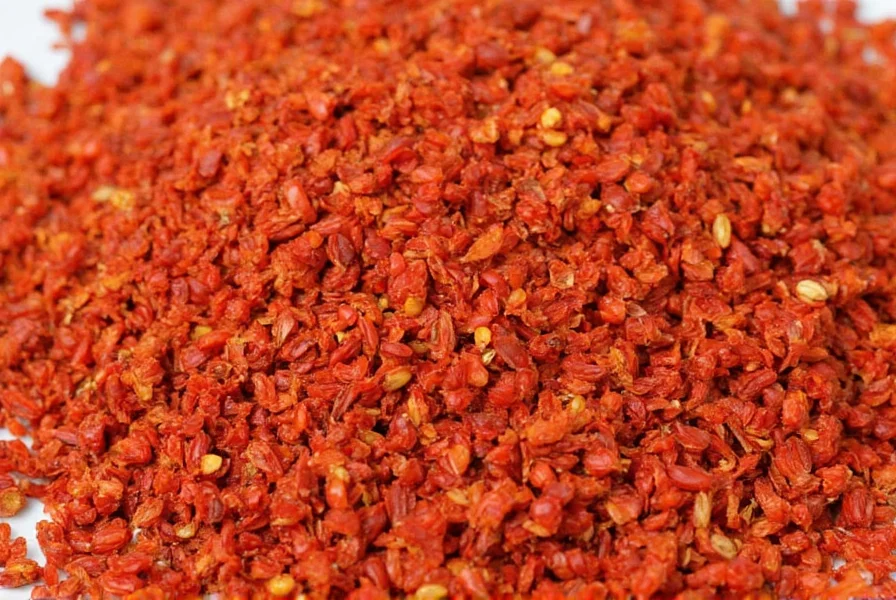When you sprinkle red pepper flakes on pizza or pasta, you're most likely using a blend centered around Capsicum annuum varieties, particularly cayenne peppers. These vibrant crimson flakes deliver that familiar spicy kick through capsaicin, the compound responsible for chili heat. Understanding exactly what pepper comprises your red pepper flakes helps you control flavor profiles in cooking and make informed substitutions when needed.
The Botanical Identity of Red Pepper Flakes
Despite the name, red pepper flakes aren't made from bell peppers or sweet varieties. The primary component in most commercial red pepper flakes is cayenne pepper (Capsicum annuum), which rates between 30,000-50,000 on the Scoville Heat Unit scale. However, the exact composition varies significantly:
| Regional Variation | Primary Pepper(s) | Heat Level (SHU) | Flavor Profile |
|---|---|---|---|
| Italian-style | Mixture of辣椒 varieties | 15,000-30,000 | Complex, slightly smoky |
| American commercial | Cayenne pepper | 30,000-50,000 | Sharp, clean heat |
| Mexican-style | Arbol or de árbol peppers | 15,000-30,000 | Bright, citrusy notes |
| Asian-style | Bird's eye chilies | 50,000-100,000 | Intense, immediate heat |
What pepper is red pepper flakes made from: The manufacturing process
Understanding what pepper is red pepper flakes made from requires examining the production process. Manufacturers select fully ripened red chilies, which are then:
- Air-dried or dehydrated at controlled temperatures
- Sorted to remove stems, seeds, and impurities (though some artisanal versions retain seeds for extra heat)
- Crushed or coarsely ground to create the characteristic flake texture
- Packaged to preserve freshness and potency
The drying process concentrates capsaicin levels, making red pepper flakes significantly hotter than their fresh counterparts. This explains why a pinch of red pepper flakes delivers more heat than an equivalent amount of fresh cayenne.

Distinguishing red pepper flakes from similar products
Many home cooks confuse red pepper flakes with other spicy ingredients. Here's how to differentiate:
- Red pepper flakes vs cayenne pepper: While cayenne is the primary component in many red pepper flakes, pure cayenne pepper is a fine powder made exclusively from ground cayenne peppers. Red pepper flakes contain larger, coarser pieces that may include multiple chili varieties.
- Red pepper flakes vs crushed red pepper: These terms are often used interchangeably, though "crushed red pepper" sometimes indicates a finer grind. Both typically contain similar pepper varieties.
- Red pepper flakes vs chili powder: Chili powder is a spice blend that includes ground chilies plus other spices like cumin and garlic powder, while red pepper flakes contain only dried, crushed chilies.
Culinary applications and substitutions
Knowing what pepper is red pepper flakes made from helps you make intelligent substitutions when cooking. If you've ever wondered what pepper is red pepper flakes substitute, consider these options:
- For mild heat: Paprika (use 1:3 ratio - 1 part paprika to 3 parts flakes)
- For similar heat profile: Cayenne powder (use 1:2 ratio)
- For complex flavor: Aleppo pepper (use equal parts)
- For fresh alternative: Finely minced serrano or jalapeño peppers
The difference between red pepper flakes and cayenne pepper matters most in dishes where texture plays a role. Flakes provide visual appeal and gradual heat release, while powders integrate completely into sauces and marinades.

Storage and freshness considerations
To maintain potency, store red pepper flakes in an airtight container away from light and heat. Properly stored, they retain maximum flavor for 6-12 months. Signs your red pepper flakes have lost potency include:
- Faded color (should be vibrant red)
- Diminished aroma
- Reduced heat intensity
- Musty or stale smell
Freezing red pepper flakes can extend their shelf life up to two years while preserving capsaicin levels. For optimal flavor, purchase small quantities from stores with high turnover to ensure freshness.
Common misconceptions about red pepper flakes
Several myths persist about what pepper is red pepper flakes composed of:
- Misconception: All red pepper flakes are made from the same pepper variety
Reality: Composition varies by region and brand, with Italian blends often containing multiple chili types - Misconception: Red pepper flakes and cayenne pepper are identical
Reality: While cayenne is common in flakes, pure cayenne is a fine powder of single-variety peppers - Misconception: The seeds make red pepper flakes hotter
Reality: Capsaicin concentrates in the placenta (white ribs), not the seeds, though seeds often retain capsaicin residue











 浙公网安备
33010002000092号
浙公网安备
33010002000092号 浙B2-20120091-4
浙B2-20120091-4